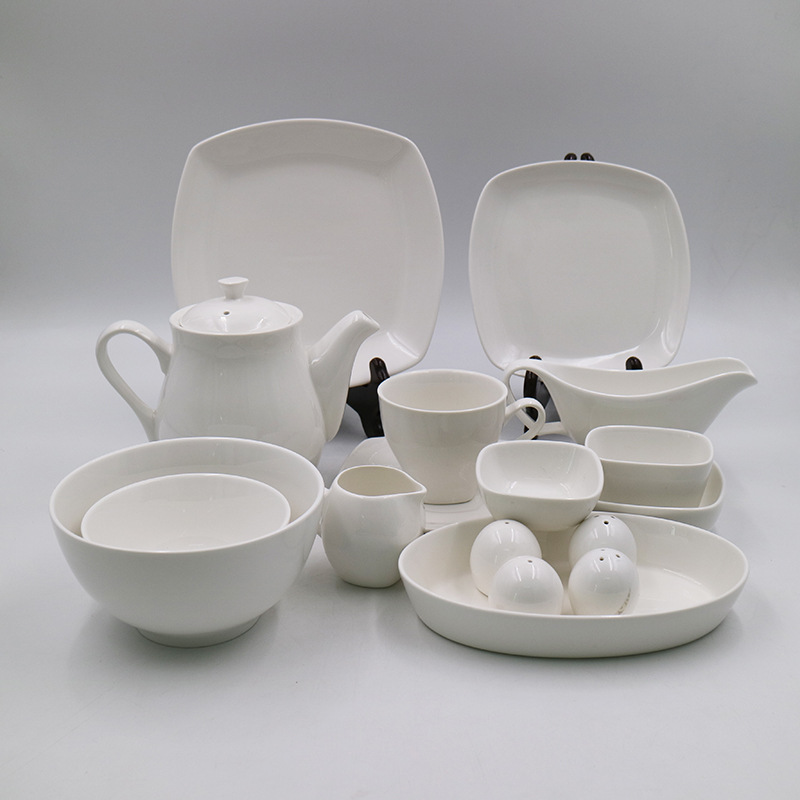
The production process of airline porcelain tableware involves complex technology and meticulous craftsmanship to ensure that the tableware is both attractive and functional, meeting the strict requirements of air transport. Here are the general steps involved in the manufacturing of airline porcelain tableware:
Needs Analysis: Design based on the requirements of the airline, including the size, shape, weight, style, and decoration needs of the tableware.
Graphic Design: Designers create design drawings, including 3D models, to ensure the feasibility of the design.
Selecting Clay: Airline porcelain tableware typically uses high-quality clay materials such as kaolin, quartz, and feldspar.
Batching: Mix the raw materials according to a specific formula to ensure the strength and durability of the porcelain.
Pressing or Slip Casting: Use mechanical pressing or slip casting methods to press the clay into molds to form the desired shape of the tableware.
Drying: Place the formed tableware in a specific environment to dry, removing excess moisture.
Bisque Firing: The dried tableware is placed in a kiln for the first firing, typically at temperatures between 1000°C and 1200°C, to harden but not fully vitrify the pieces.
Glazing: Apply a layer of glaze to the surface of the bisque-fired tableware to enhance its appearance and durability.
Glost Firing: Place the glazed tableware back in the kiln, this time at higher temperatures (usually above 1200°C) for glost firing, fully vitrifying the pieces and enhancing their strength and gloss.
Printing or Hand Painting: Add patterns or logos to the porcelain tableware according to the branding requirements of the airline.
Glazing: To add an extra layer of gloss and protection, a final glazing and firing might be performed.
Quality Control: Each piece of porcelain tableware undergoes strict quality checks to ensure there are no defects.
Packaging: Approved products are appropriately packaged to prevent damage during transportation.
This process not only ensures the functionality and aesthetic appeal of the tableware but also meets the safety and hygiene standards of the aviation industry. The production of airline porcelain tableware usually requires high technology and precise operations to adapt to the special demands of the flying environment.